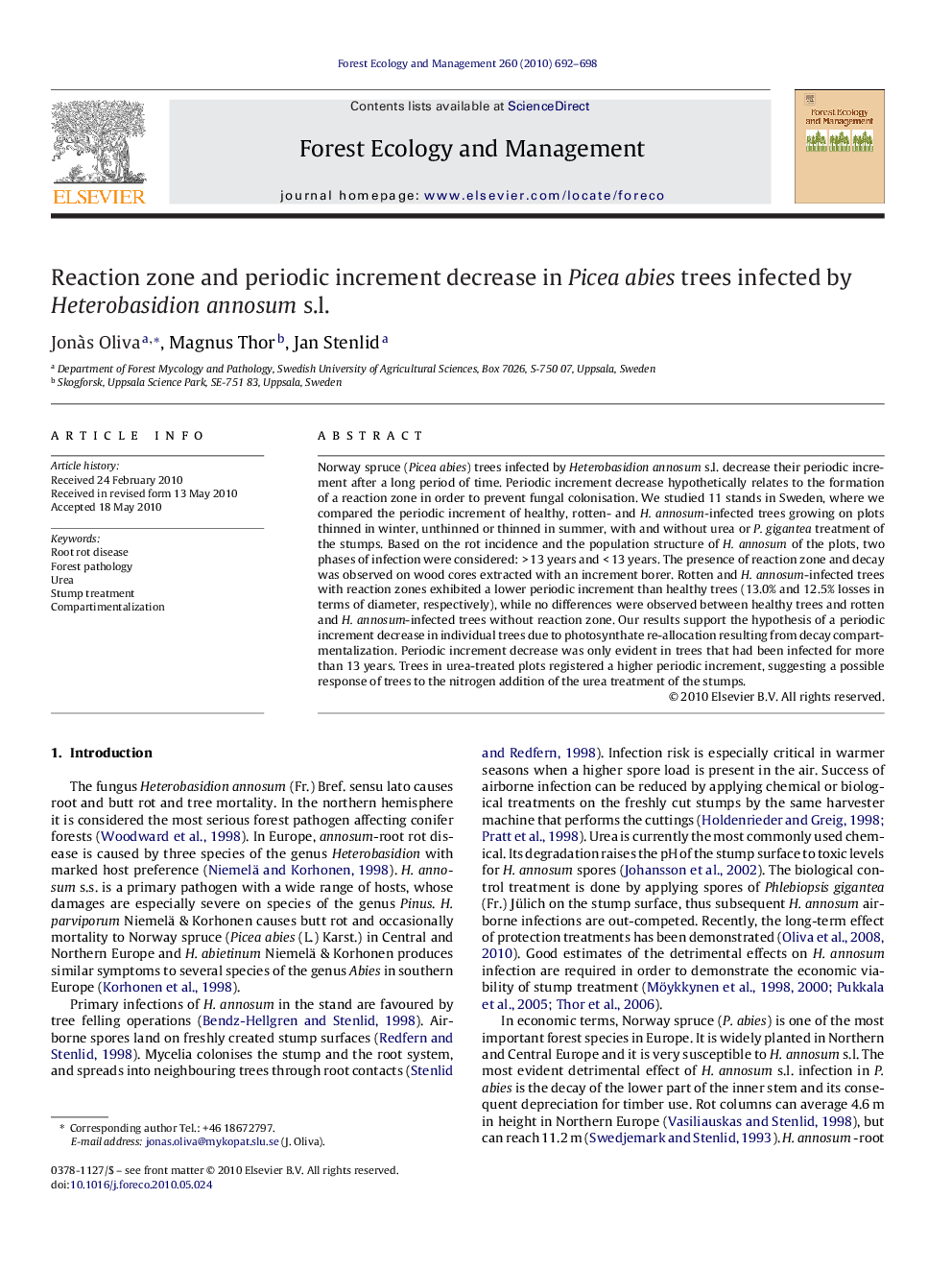| کد مقاله | کد نشریه | سال انتشار | مقاله انگلیسی | نسخه تمام متن |
|---|---|---|---|---|
| 88392 | 159301 | 2010 | 7 صفحه PDF | دانلود رایگان |

Norway spruce (Picea abies) trees infected by Heterobasidion annosum s.l. decrease their periodic increment after a long period of time. Periodic increment decrease hypothetically relates to the formation of a reaction zone in order to prevent fungal colonisation. We studied 11 stands in Sweden, where we compared the periodic increment of healthy, rotten- and H. annosum-infected trees growing on plots thinned in winter, unthinned or thinned in summer, with and without urea or P. gigantea treatment of the stumps. Based on the rot incidence and the population structure of H. annosum of the plots, two phases of infection were considered: > 13 years and < 13 years. The presence of reaction zone and decay was observed on wood cores extracted with an increment borer. Rotten and H. annosum-infected trees with reaction zones exhibited a lower periodic increment than healthy trees (13.0% and 12.5% losses in terms of diameter, respectively), while no differences were observed between healthy trees and rotten and H. annosum-infected trees without reaction zone. Our results support the hypothesis of a periodic increment decrease in individual trees due to photosynthate re-allocation resulting from decay compartmentalization. Periodic increment decrease was only evident in trees that had been infected for more than 13 years. Trees in urea-treated plots registered a higher periodic increment, suggesting a possible response of trees to the nitrogen addition of the urea treatment of the stumps.
Journal: Forest Ecology and Management - Volume 260, Issue 5, 30 July 2010, Pages 692–698